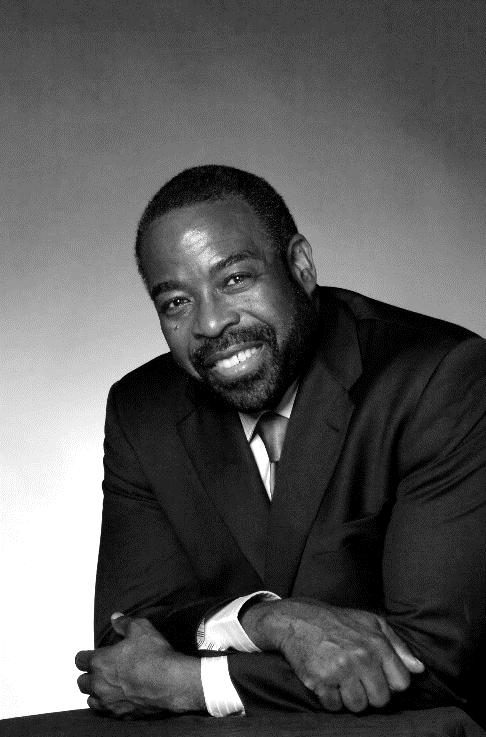
7 minute read
FOREWORD 2: JAMES MACNEIL
Everything Is Perfect & Everything Is Improving
EVERYTHING IS PERFECT & EVERYTHING IS IMPROVING!
Advertisement
James MacNeil
Read those words again slowly, “Everything is Perfect and Everything is Improving!” and ask yourself, could this be true? Your brain wants to reject it in light of hatred, war, and suffering. “Everything is Perfect and Everything is Improving!” is a mantra and a “koan.” A koan is a paradoxical riddle designed to, when meditated upon, invoke enlightenment.
I invite you to expand your consciousness and reconsider your perspective on the meaning of life and the meaning of the universe because, according to Max Planck, the originator of Quantum Theory, “when you change the way you look at things, the things you look at change.”
The “problem” with the traditional perspective on our world, our sciences, our religions, and ourselves is a “problem mindset.” We have approximately 10,000 religions, countless spiritual belief structures, and innumerable sciences and they all have this fatal flaw in common: they assume the “problem mindset.” Who says sunshine is better than rain, more money is better than less money, and a life of ease is better than one with drama and trauma? The rain dancers, the happy poor, and those who have transformed themselves through difficulties into positive world change agents would suggest that this universe exists with the “Yin Yang” duality that allows every blessing to be a curse and every curse to be a blessing. The only real problem, therefore, is not in the world but in our judgment of the world and of ourselves producing a fundamental state of discontent. Judgment causes separation psychologically and spiritually. The most commonly used Greek word for “sin” in the Bible is “hamartia” which means
“separation.” The problem mindset is one of judgment, which causes separation from DivineLove, other people, and our higher selves.
Welcome to my monstrously reduced and absolutely audacious explanation of the universe, the spirit world, and the purpose for this existential experience we call life, which is my attempt to prove that Everything is Perfect and Everything is Improving, including YOU.
Let's begin at the beginning! Our quest as a species to understand ourselves, our universe, and the spiritual realm began with Astronomy and Astrology.
Astronomy And Astrology
What we now call “Astronomy” is the first of the sciences appearing in the earliest records of our history, from Ancient Mesopotamia, India, Egypt, Greece, and China. In these ancient worlds, astronomy and astrology were one — a single, unified approach to explaining the universe. There was no distinction between what we now refer to as science and spirituality.
As the abundance of theories and frameworks expanded in each region of the world, these streams of thought split like a major river into countless streams when researchers would expand on one element thereby building it into its own distinct body of thought producing various sciences, spiritual traditions, and religions. These divisions with specialized knowledge and focus dramatically increased efficiency, depth, and development. From these origins we now have the aforementioned religions, spiritual belief structures, ancient traditions, and varieties of sciences.
Science And Religion
Each science, religion, and spiritual stream brings its unique treasures to the whole. The Age of Enlightenment in the 17th century and the Scientific Revolution of the 18th Century drove an important wedge between science and religion creating what Stephen Jay Gould called "Nonoverlapping Magisteria" (or NOMA) — that is, two distinct realms of inquiry, investigation, and authority, one focusing on facts and the other on values. This division between science and spirituality was the best thing that could have happened for our scientific progress. Until then, it was too easy for scientists to hide behind the “God” answer to all remaining mysteries. The separation demanded deeper scientific understanding by removing the “God of the Gaps” option (that is, appealing to God as the explanation wherever and whenever there is a gap in our scientific knowledge). Each religion and spiritual stream, by seeing itself as The Truth, forced them to seek the answers to everything within their unique framework and belief system
When finite minds seek to understand infinite mysteries, they will likely appear to disagree. Disagreement, or perceived disagreement, provides the opportunity for next-level understanding, and that excites me greatly. Sadly, these sciences and spiritual traditions have been built in the “problem mindset” which causes judgment and separation and therefore perceives differing perspectives as threats and justification for aggressive disputes with an “either-or” binary position rather than a “yes, and” inclusive position. We, as individuals and as a species, are on the same team, and we can lovingly and openly bring our gifts of insights and perspectives to the whole and openly and curiously learn from each other. We unlock the vault of infinite knowledge when we seek the truth in love and speak the truth in love.
The Unified Field Theory
The idea of a “Unified Field Theory” is an exciting quest to fully understand the power of the universe. A group of scientists began attempting to formulate what they called The Unified Field theory in 1912, and they were soon joined by Albert Einstein. In physics, there are believed to be four fundamental forces in the universe: gravity, electromagnetism, strong nuclear, and weak nuclear. At the time of this writing, there are physicists who speculate the existence of a fifth force called “quintessence” (remember this word). When a force is described by a mathematical formula, the formula representing the force is referred to as a “field.” The unified field theory, therefore, is a quest to create a master mathematical formula that describes all forces in the universe. Albert Einstein’s proposed Unified Field Theory, which was a marriage of The Theory of General Relativity and Electromagnetism, has been generally concluded as unsuccessful. Unified Field Theory has given rise to many attempts to produce a grand unified theory including String Theory and M-Theory and, most notably, The Theory of Everything which seeks to merge Einstein's Theory of General Relativity and Max Planck's Theory of Quantum Mechanics. At this time, The Theory of Everything has yet to be proven successful.
Therealtheoryofeverything
My assertion is that any theory of “everything,” to be complete and successful, must include the spiritual/metaphysical dimension (the prefix
“meta” in the word metaphysical means that which exists before, after, and/or beyond the physical world).
When the human quest for understanding began, there was an assumption that everything was connected — from the basic elements of the universe to the human soul and the spiritual realm. Albert Einstein, founder of the Theory of General Relativity, and Max Planck, the founder of Quantum Mechanics, agree.
Albert Einstein believed in the existence of a divine force that permeates and rules the universe. He felt understanding this force, however, was “too vast for our limited minds.” When asked what he believed about God, Einstein stated, “We see a universe marvelously arranged, obeying certain laws, but we understand the laws only dimly. Our limited minds cannot grasp the mysterious force that sways the constellations.”
Max Planck (the founder of Quantum Mechanics) stated, "As a man who has devoted his whole life to the most clear-headed science, to the study of matter, I can tell you as a result of my research about atoms this much: There is no matter as such. All matter originates and exists only by virtue of a force We must assume behind this force the existence of a conscious and intelligent Mind. This Mind is the matrix of all matter.”
The Spirit World
The spirit world is both transcendent and immanent which means it exists beyond the parameters of time, space, and matter, and at the same time, it penetrates and permeates the entire physical universe. The spirit world created the universe including time, space, and matter.
THE UNIVERSE—WHAT IS EVERYTHING MADE OF?
Our understanding of matter, all that physically exists, started with the classical elements of water, earth, fire, and air. There were many deep, rich, insightful, and lasting efforts to uncover and understand a “fifth element” or “quintessence” (still more to come on this).
The quest to understand “what’s that made of?” finally produced the periodic table in 1869. Scientists have identified 118 elements, made up of atoms which are made of a nucleus, protons, and electrons.
Thirty-one years later, in 1900, Max Planck went even smaller to the subatomic level and birthed Quantum Theory. The word “quanta” means “how much?” The question Planck was asking and answering was “what is the minimum amount of energy that could be gained or lost by an atom?” Planck named this minimum amount the “quanta” (plural of quantum). For example, one photon of light carries exactly one quantum of energy.
According to Wikipedia, we now have the following subatomic elementary particles:
“Six ‘flavors’ of quarks: up, down, strange, charm, bottom, and top; Six types of leptons: electron, electron neutrino, muon, muon neutrino, tau, tau neutrino; Twelve gauge bosons: the photon of electromagnetism, the three W and Z bosons of the weak force, and the eight gluons of the strong force; and The Higgs boson.”
Thus, humankind moved from believing in four elements (earth, wind, water, and fire) to five elements (adding quintessence) to 118 elements (the periodic table) while also observing that these elements are all really just made up of the same three atomic elements (protons, neutrons, and electrons), and then we discovered numerous subatomic particles.
Nevertheless, behind it all, something is constant…
Everything Is Energy
Einstein’s most famous formula, E = mc2, fundamentally asserts that energy and matter are interchangeable as they are different forms of the same thing. All matter is made up of atoms and subatomic waves and particles which, according to Einstein and quantum mechanics, are all made up of energy. These subatomic particles and subatomic waves are better defined as “energetic occurrences.” These energetic occurrences are the building blocks of every atom which are the building blocks of every element. Therefore, Einstein and the scientific community, in general, have concluded that everything is energy.
The Harvard & Smithsonian Center for Astrophysics agrees that the universe is made up of energy. This energy is subdivided into 27% dark matter, 68% dark energy (the term “dark” means it's currently unobservable and thereby unavailable for research and study), and 5% “visible” matter and energy. The universe is made up of energy, some in physical form and some not, some observable and some not.
The fact that our greatest astrophysicists are currently only able to observe 5% of the known universe is a helpful reminder that humility, curiosity, and openness are the only reasonable postures for this discussion.





